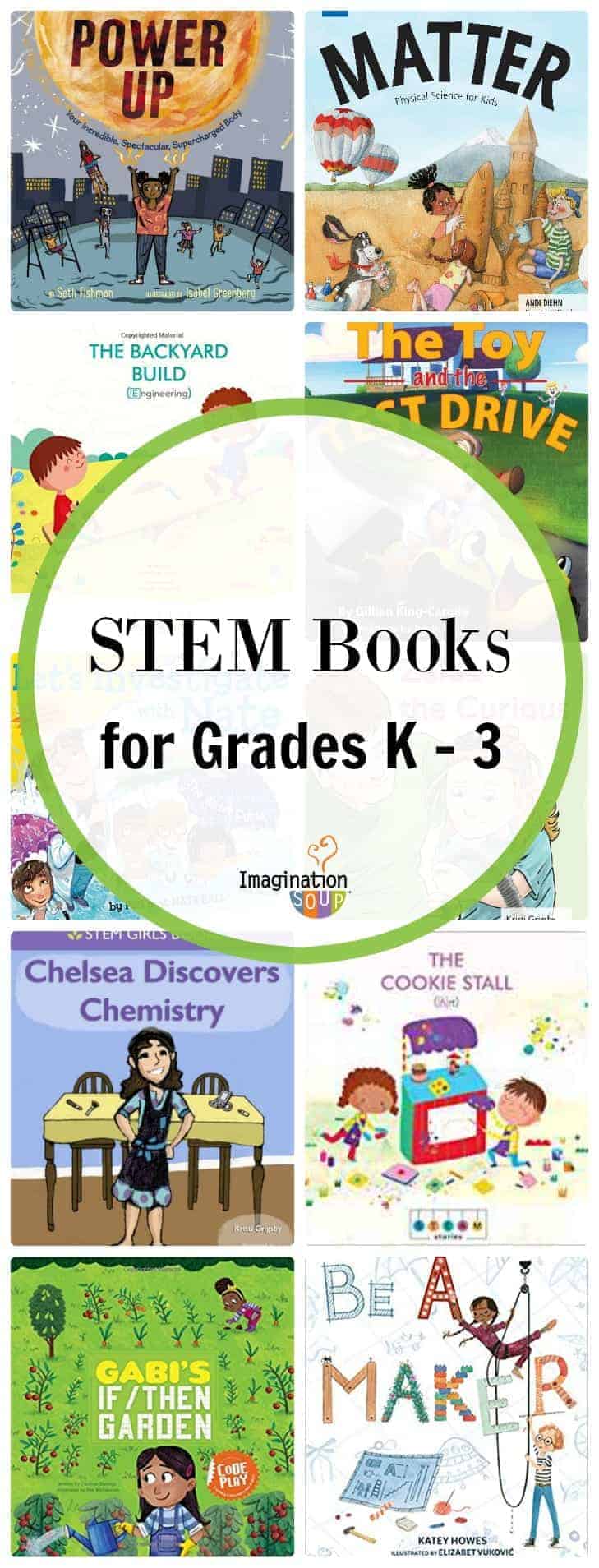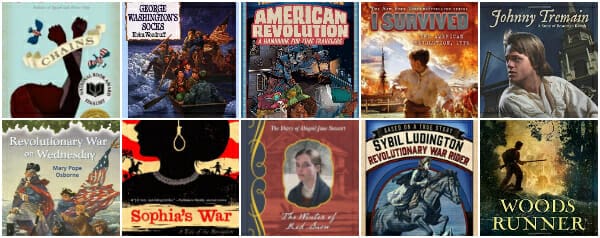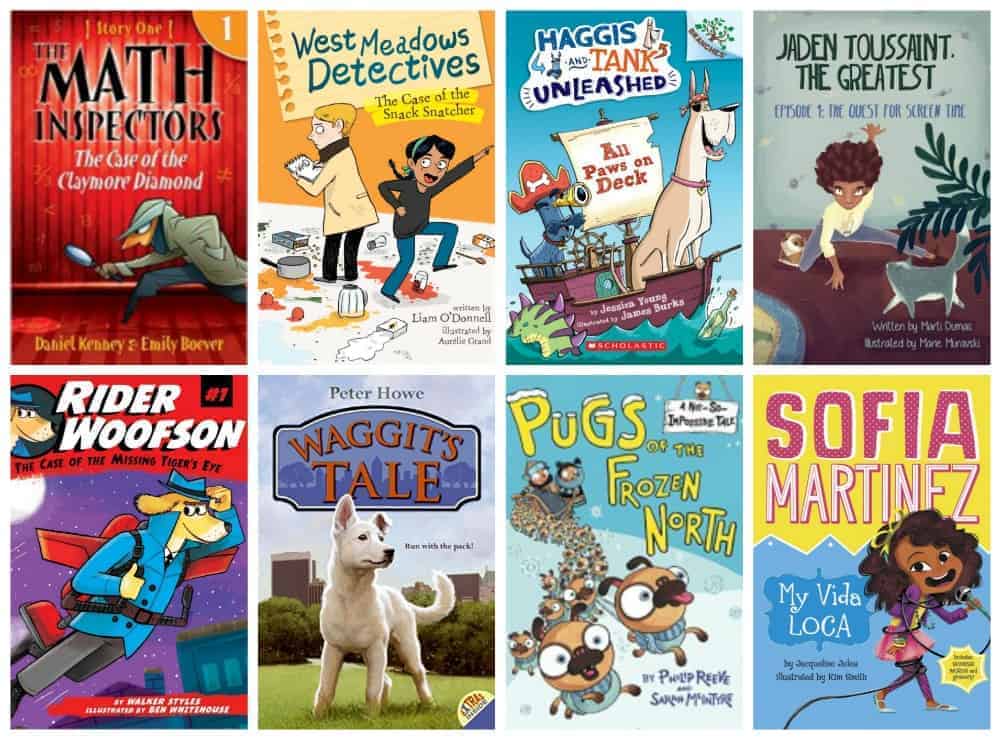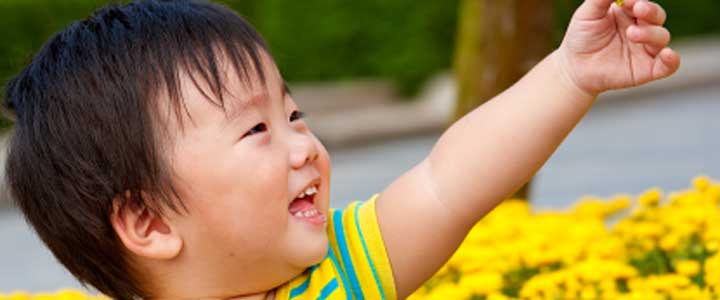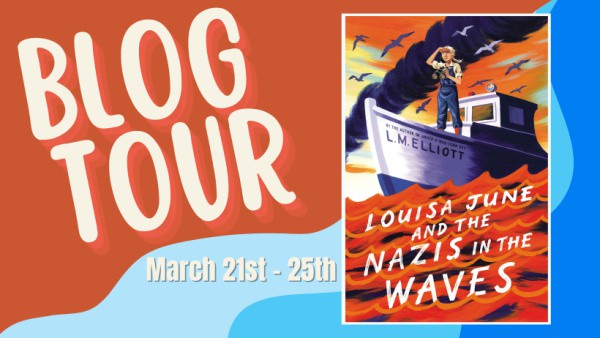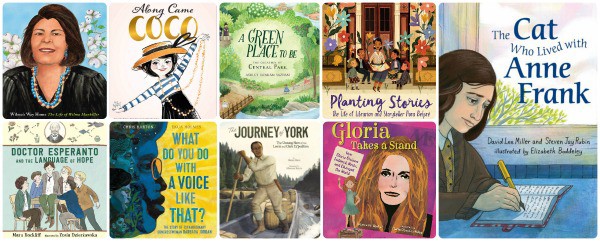STEM Picture Books for Grades K – 3
This post may contain affiliate links.
Don’t Miss:
STEM Gifts, Toys, & Books for Kids
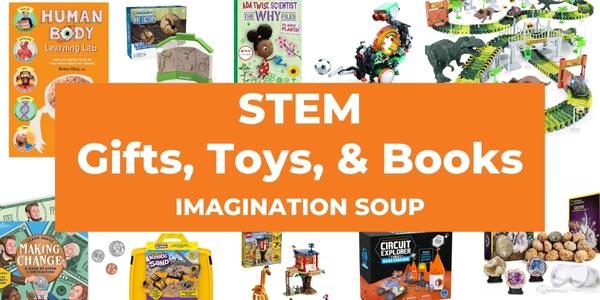
STEM Picture Books for Grades K – 3
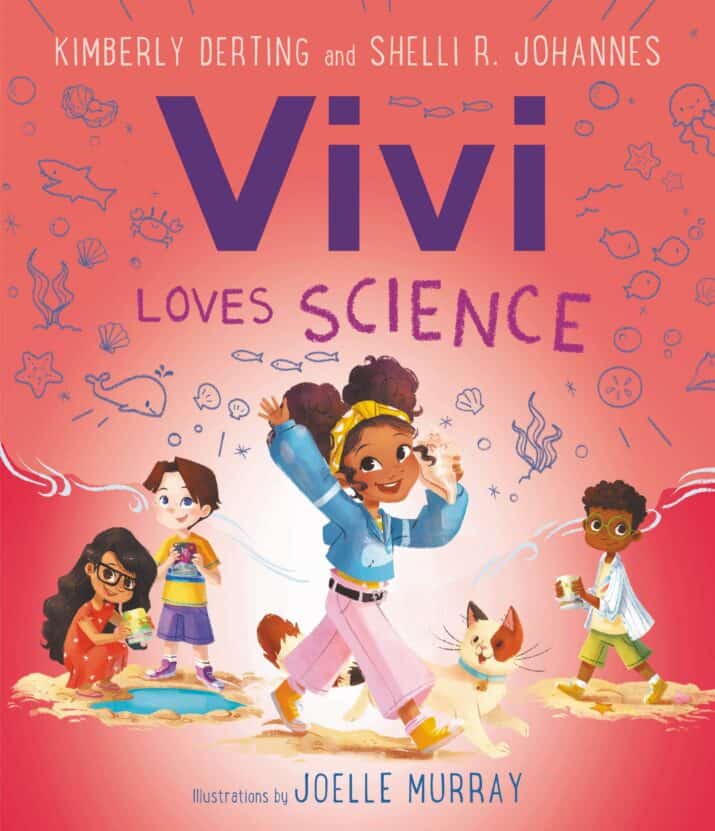 Vivi Loves Science by Kimberly Derting and Shelli R. Johannes, illustrated by Joelle Murray
Vivi Loves Science by Kimberly Derting and Shelli R. Johannes, illustrated by Joelle Murray
Vivi loves science and being curious. When her class gets to go the ocean for a field trip, she learns many new, wonderful things about tide pools.
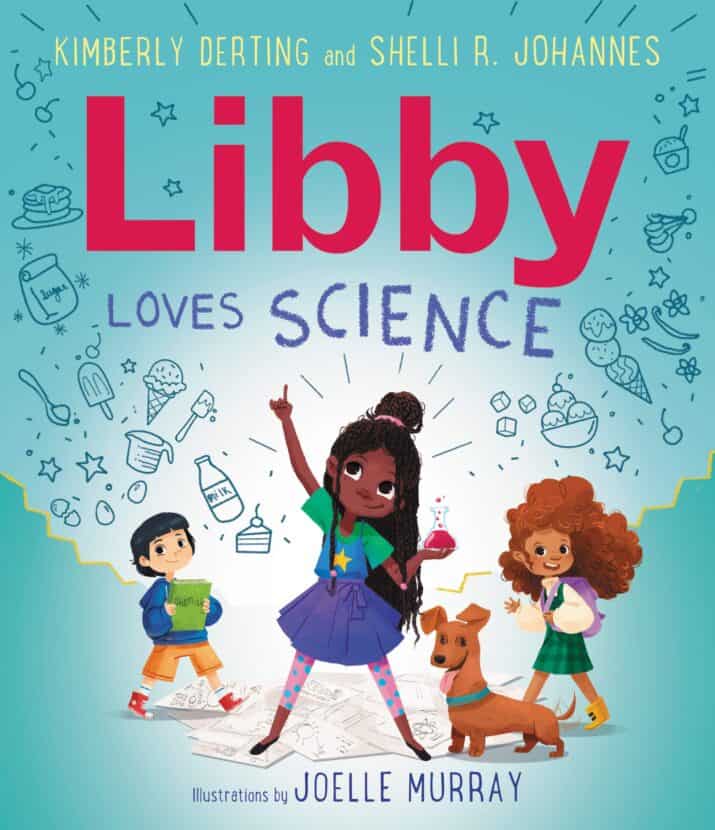 Libby Loves Science by Kimberly Derting and Shelli R. Johannes, illustrated by Joelle Murray
Libby Loves Science by Kimberly Derting and Shelli R. Johannes, illustrated by Joelle Murray
Libby loves science and experiments with recipes and experiments at school. Chemistry reminds her of cooking. At the science fair, she and her classmates need to attract more people to the booth to show that science is fun but their experiments don’t win them the prize of an ice cream party. Their teacher reminds them that it’s about trying, not winning.
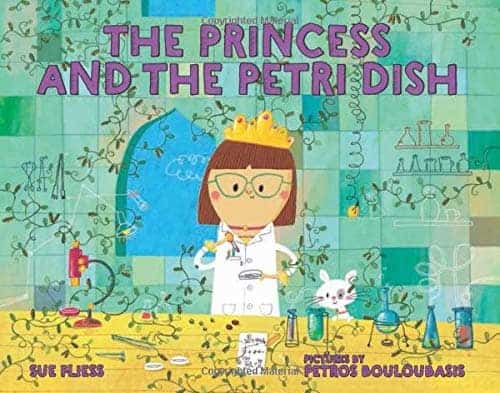
The Princess and the Petri Dish by Sue Fliess, illustrated Petros Bouloubasis
A STEM loving princess named Pippa uses the scientific method to improve the taste of green peas. She’s successful at first but must use her skills again to solve the overgrowing pea plants which shows the kingdom that she’s the best scientist in the land.
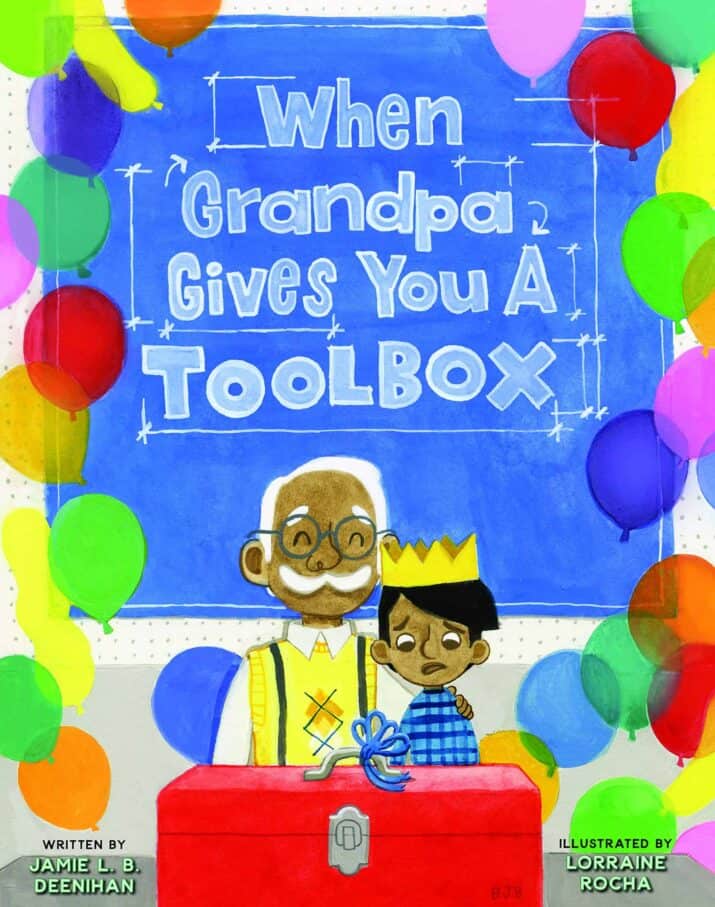
When Grandpa Gives You a Toolbox by Jamie L. B. Deenihan, illustrated by Lorraine Rocha
The boy wanted a dollhouse but grandpa gives him a toolbox. He realizes that he can use his toolbox to build a house for a bird, help a neighbor with her mailbox, and build exactly what he wanted originally — a dollhouse. This is a special story that defies gender stereotypes, encourages creative engineering, and shows a loving relationship between grandparent and child.
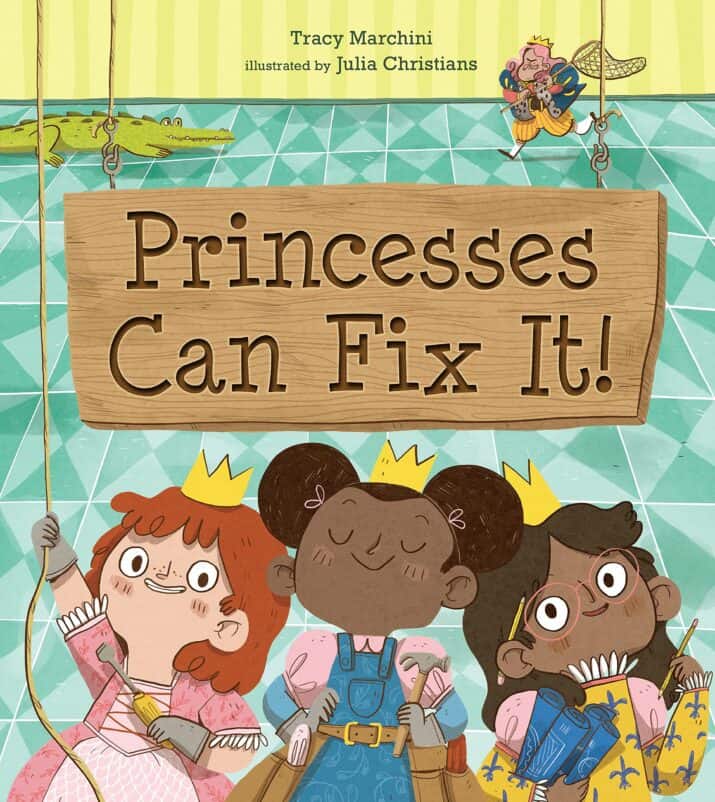
Princesses Can Fit It! by Tracy Marchini, illustrated by Julia Christians
A darling girl empowerment story where the princesses show their dad that they are capable and don’t need to be stuck in limiting gender roles. When the king has issues with alligators, the princesses know they can fix it. And, even though the king dismisses them, their brother the prince encourages them, and the princesses try and try until they find a solution!
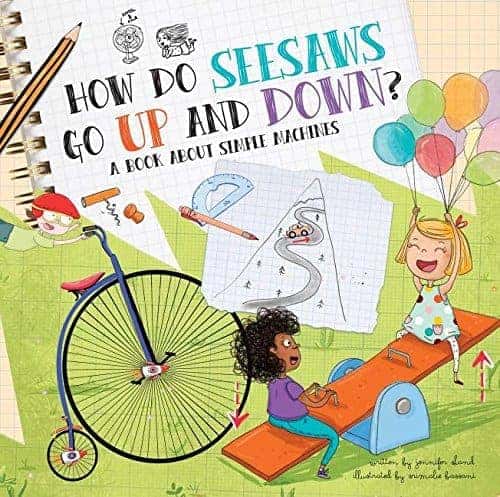
How to Seesaws Go Up and Down? A Book About Simple Machines by Jennifer Shand, illustrated by Srimalie Bassani
SCIENCE – SIMPLE MACHINES
The illustrations might remind you a little of Peg and Cat because they’re on graph paper with a collage look. The author asks readers a question like –“Why can you almost always ride faster on a bigger bike than a smaller bike?” The makes a silly hypothesis — “Is it because bigger bikes have secret rocket boosters?” Turn the page and you’ll read more about the wheel and axel and how a big wheel gets a bigger tire turn. I love that the authors show everyday, common objects that kids can recognize for their examples like the flag on a flagpole, a seesaw in a park, a truck going up a mountain or a screw in a piece of wood. The explanations are easy to understand in spot-on kid-language. I recommend this book to introduce kids to STEM concepts, particularly for elementary classrooms learning about simple machines.
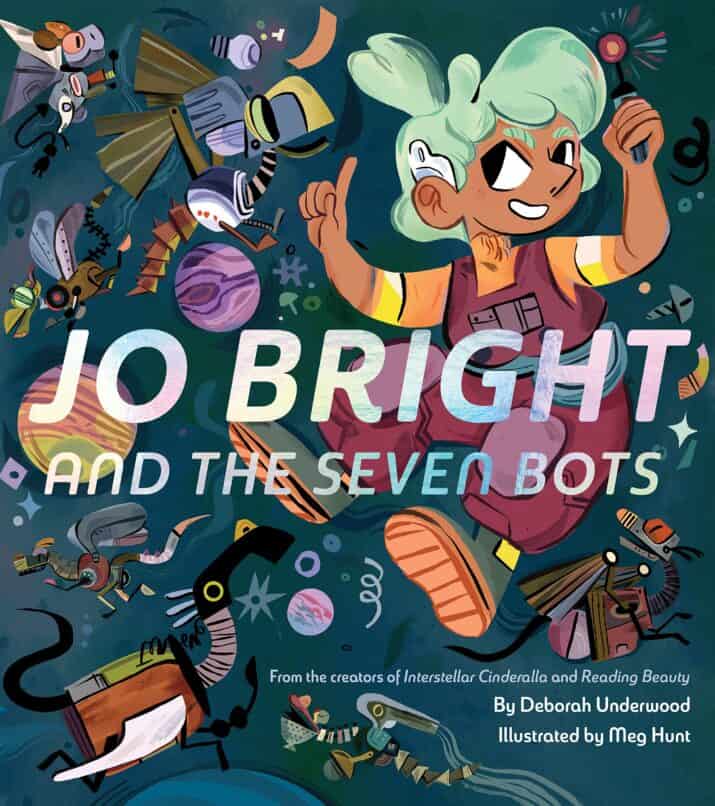
Jo Bright and the Seven Bots by Deborah Underwood, illustrated by Meg Hunt
ROBOTICS
In this updated science fiction Sleeping Beauty, clever Jo loves building Bots from scratch. But the jealous queen wants to be the best bot builder — better than Jo. Rhyming, jaunty text depicts Jo befriending a dragon and fixing an enchanted dragon. They capture the queen and the mirror-bot makes Jo the new queen. It’s an engaging, girl-power STEM story that readers will love.
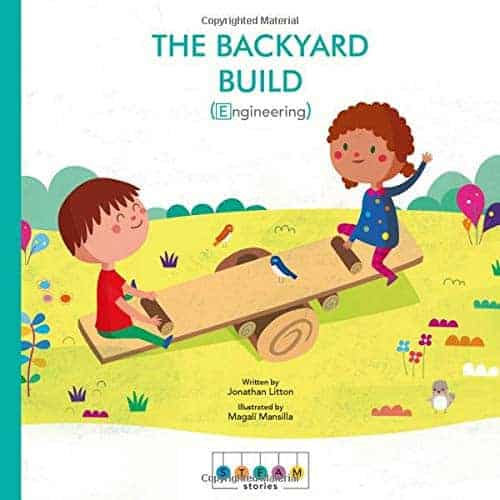
The Backyard Build by Jonathan Litton, illustrated by Magali Mansilla
ENGINEERING
Max, Suzy, and their neighbor Miss Gizmo make a plan and build a swing. Then they choose more materials and make a seesaw and a slide. The story models coming up with a plan and executing it but doesn’t go into the details of building any of these playtoys.
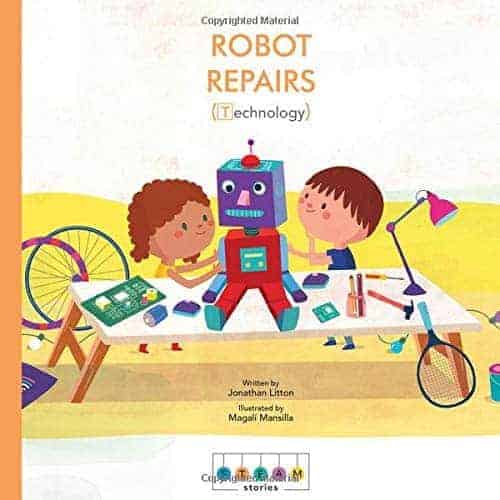
Robot Repairs by Jonathan Litton, illustrated by Magali Mansilla
TECHNOLOGY / ENGINEERING
Continuing the STEAM series is another story about Max and Suzy, this time about problem solving an old robot who needs fixing. The friends work together to figure out which pieces are arms and legs, attach the head, and put in new batteries. Kids will find this story interesting!

The Picnic Problem by Jonathan Litton, illustrated by Magali Mansilla
MATH – SHAPES, COUNTING, ADDING
From the STEAM stories series comes a new story focused on math. Max and Suzy get a letter from Miss Add-It-Up that sends them to the park to solve a math-related treasure hunt of clues. For example, “Which kite has the longest tail? Ignore the strings, so you don’t fail.” Max and Suzy compare tails of the differently shaped kites. The circle kite ends up being the winner and having their next clue. There’s a ton of fun math problems that kids can solve with the main characters as you read the story. I love that this story is actually a relatable adventure story that integrates math into it.
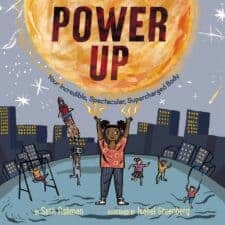
Power Up: Your Incredible, Spectacular, Supercharged Body by Seth Fishman, illustrated by Isabel Greenberg
SCIENCE – BODY
This book feels like a motivational speech! I’m positive it will motivate your kids to be more curious about their powerful bodies! Use this book as an introduction to studying the body or energy –it’s sure to captivate students at school and kids at home. “That little finger has enough energy to light up one of the biggest cities in the world for an entire day. That’s power for four million refrigerators, seven million TVs, eighteen hundred schools, and about twelve thousand stoplights.” Isn’t that so wild!? I think the illustrations with a main character of color are spectacular.

Forces: Physical Science for Kids by Andi Diehn, illustrated by Shulul
SCIENCE – FORCE/MOTION
The author gets kids to identify their own background knowledge with force — forcing the door open, forcing a soccer ball into the goal, or tug-a-war. Kids and teachers will enjoy the conversational tone as well as the introduction to the concepts of force.

Let’s Investigate with Nate: The Water Cycle by PBS host Nate Ball illustrated by Wes Hargis
SCIENCE – WATER

The Toy and the Test Drive by Gillian King-Cargile, illustrated by Kevin Krull
SCIENCE – SOLAR POWER
I can’t wait to read this book! A little girl uses her imagination to create things ending with making something for the community.
Gabi and her friend Adi are planting a garden. They use, maybe overuse, if / then statements to make decisions and evaluate their next steps.

Chelsea Discovers Chemistry by Kristi Grigsby, illustrated by Kayla Irizarry
SCIENCE – CHEMISTRY
While I’m not a fan of the illustrations, I do like the realistic real-world problems (cookies and makeup) which Chelsea uses trial and error to solve.

Zelda the Curious by Kristi Grisby, illustrated by Brian Maikisch
ENGINEERING
Zelda is a curious girl who likes to tinker. This can sometimes be good or disastrous but it’s all part of her process. Her daily life is meant to be an introduction to mechanical engineering.
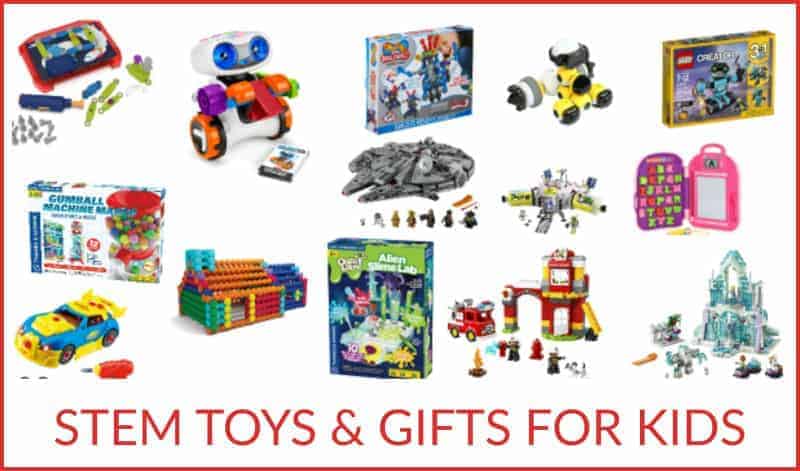 STEM (SCIENCE / MATH / TECH / ENGINEERING) TOYS & GIFTS
STEM (SCIENCE / MATH / TECH / ENGINEERING) TOYS & GIFTSGiving STEM gifts for Christmas or any other holiday serves two purposes — first, these are fun gifts kids want and second, these are learning gifts, too.




